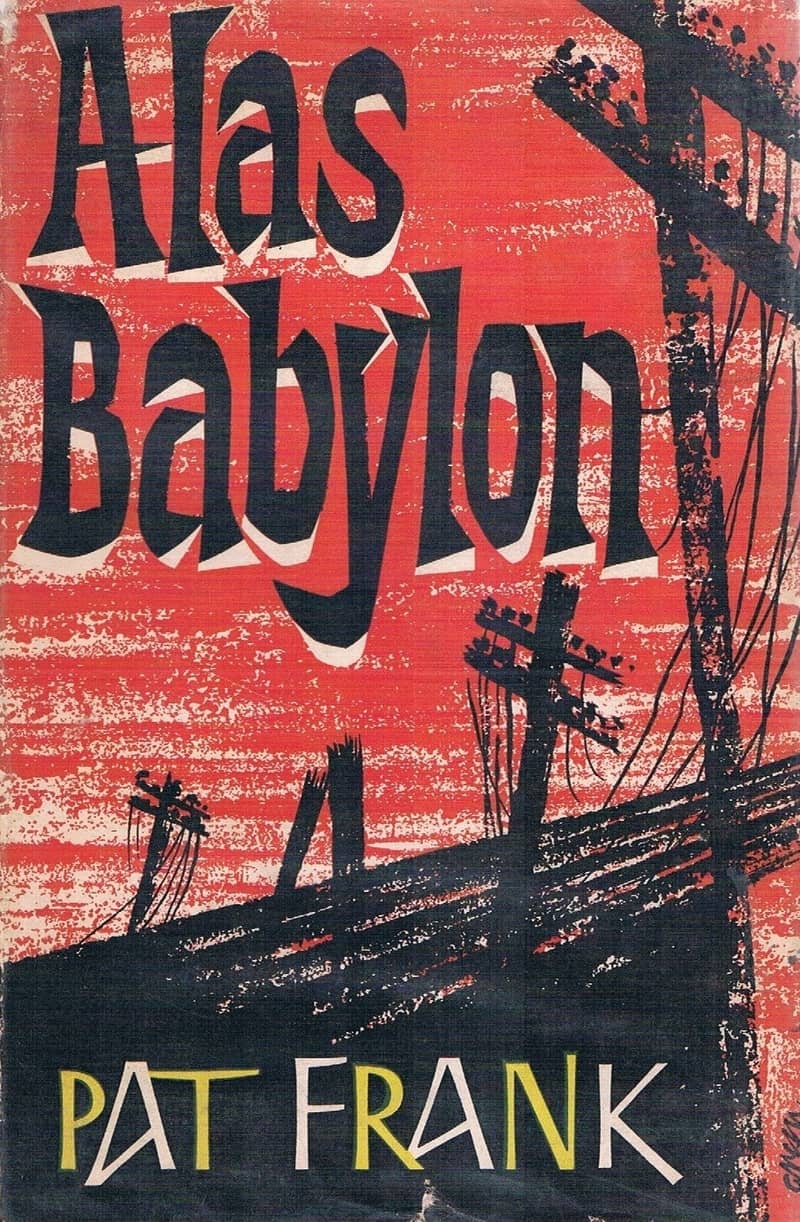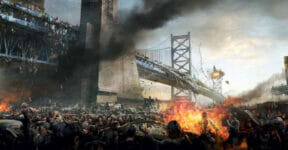Back in the 1950s and 1960s, the threat and issue of nuclear war were more than just something that bothered everybody’s mind, but also some sort of hysteria to put the nation in a constant state of unease. In 1959, the American author Pat Frank released a novel titled “Alas, Babylon” to picture an imaginary scenario in which the citizens of a small town in Florida deal with the aftermath of a nuclear war between the United States and Soviet Union. The novel captures the frenzies and chaos so well that it remains popular decades later. Many middle and high school English classes still make it a compulsory read.

Pat Frank is the pseudonym of Harry Hart Frank, a journalist and public affairs representative who once served as a correspondent in the Korean War and World War II. His experiences covering the Korean War are described in the travelogue The Long Way Round (1953) and influenced his other book Hold Back the Night (1951). A few years after “Alas, Babylon,” Frank published a non-fiction work “How to Survive the H-Bomb and Why.”
Alas, Babylon might be one of the most realistic post-apocalyptic science fiction novels for two main reasons: Frank’s social background and his knowledge as a wartime correspondent. Much of the events described in the novel take place in the fictional town of Fort Repose, which is based on (at the time) his actual hometown of Tangerine, Florida. In addition, his familiarity with the Armed Forces – owing to his previous work as a wartime correspondent – resulted in the accurate depiction of the story’s military aspects. We should note also that events in the novel are set in 1959 when Cold War became the bread and butter of American public discourse.
Among the biggest wake-up calls and fears surrounding the Cold War is the realization that nuclear technology has reached the point where it opens the possibility for humans to obliterate themselves. It is an understanding that the entire world is practically held hostage until someone pulls the trigger, provoking another to follow suit in retaliation.
The novel is narrated mostly in the third-person perspective, with viewpoint characters shifting throughout the storyline. The main character in Alas, Babylon is Randy Bragg, a former Army Reserve officer living in the small town of Fort Repose, Florida.
After a brief introduction to some major and minor characters, the story really kicks off when a Soviet Union spy defects and leaks classified information regarding the Soviet’s plan to launch a massive nuclear assault on the United States. The plan also targets NATO military forces to minimize their likely retaliatory actions. According to the leaked intel, the Soviet leadership is well aware of the potential loss of up to 30 million civilian lives because of a retaliatory strike and considers it acceptable.
It does not take long for the U.S. military to prepare its defences, which soon turns out to be the actual aggressor in the unavoidable worldwide conflict. A fighter pilot, while attempting to intercept a plane over the Mediterranean, inadvertently lands an attack on an enemy submarine base in Syria. The Soviets see the subsequent explosion as the beginning of an air assault on the military facility; now, it is actually the Soviets who prepare to begin a retaliatory attack on the U.S. A full-scale nuclear strike happens just the following day, hitting the United States and its allies.
Except in very few neighbourhoods, they have crippled just about every area in the country and turned them into radioactive zones. Most lines of communication failed, while those that do still work only have limited coverage; everyone withdraws savings from banks, making the currency practically worthless; prisoners escape from their confinements, bringing anarchy to the streets. Randy Bragg just lives in a neighbourhood somewhat suited for survival. Fort Repose has one of the largest patches of non-contaminated soil in the entire country and enough resources to sustain local survivors. The river provides fish, whereas the farms produce fruits and corn. They can even use the corn to make moonshine as a profitable trading commodity.
Being a former Army Reserve, they appoint Randy as the official authority in the small community. Over the months, he leads the locals through various hardships and adventures for survival. Their stories of dealing with many challenges in a post-apocalyptic land make for an exhilarating tale all the way to the last pages.
We think Alas, Babylon does an excellent job of depicting the real horror of an all-out armed conflict between the United States and the Soviet Union while also delivering a memorable tale of hope and perseverance. On the one side, the novel describes that a nuclear war has all the possibilities to bring out the worst in humanity but it shows how teamwork and tolerance are keys to survival. Alas, Babylon was not intended as science fiction, and yet it has been consistently placed among the best of the genre.
Have you read Alas, Babylon? Do you still find the story relevant today? We’d love to hear from you.
Other things you might want to know:
Other books by Pat Frank:
- Mr. Adam (1946)
- An Affair of State (1948)
- Hold Back the Night (1951)
- The Long Way Round (1953)
- Forbidden Area (1956) (also known as Seven Days to Never)
- Alas, Babylon (1959)
- How to Survive the H-Bomb…and Why (1962)
Adaptation of Alas, Babylon:
The only known screen adaptation of Alas, Babylon is the 131st episode of Playhouse 90 aired on CBS.
Another important topic in the novel:
Alas, Babylon talks about the aftermath of a nuclear war, but it is not the only important topic referred to in its narration. The novel is set against the backdrop of the South during the time of Jim Crow. As the story goes, Randy runs for local office and fails mostly because he is an anti-segregationist. It also portrays some despicable attitudes toward people of colour.
Check out other articles by month:







